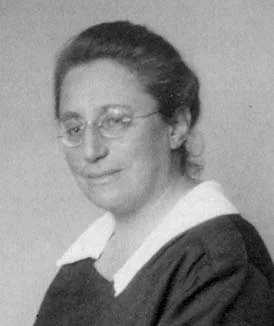The Economist, 17 December 2011: 'In praise of particle physics'
In this week of economic turbulence in Europe and the glimmer of the prospect of discovering the Higgs particle, this quite beautifully written leader article in The Economist voiced my thoughts...
Higgs ahoy!
The elusive boson has probably been found. That is a triumph for the predictive power of physics.
IN PHYSICS, the trick is often to ask a question so obvious no one else would have thought of posing it. Apples have fallen to the ground since time immemorial. It took the genius of Sir Isaac Newton to ask why. Of course, it helps if you have the mental clout to work out the answer. Fortunately, Newton did.
It was in this spirit, almost 50 years ago, that a few insightful physicists asked themselves where mass comes from. Like the tendency of apples to fall to the ground, the existence of mass is so quotidian that the idea it needs a formal explanation would never occur to most people. But it did occur to Peter Higgs, then a young researcher at Edinburgh University, and to five other scientists whom the quirks of celebrity have not treated so kindly. They, too, had the necessary mental clout. They got out their pencils and papers and scribbled down equations whose upshot was a prediction.
The reason that fundamental particles have mass, the researchers calculated, is their interaction with a previously unknown field that permeates space. This field came to be named (with no disrespect to the losers in the celebrity race) the Higgs field. Technically, it is needed to explain a phenomenon called electroweak symmetry breaking, which divides two of the fundamental forces of nature, electromagnetism and the weak nuclear force. When that division happens, a bit of leftover mathematics manifests itself as a particle. This putative particle has become known as the Higgs boson, whose possible discovery was announced to the world on December 13th (see article).
Physicists demand a level of proof that would in any other human activity (including other scientific ones) be seen as ludicrously high—that a result has only one chance in 3.5m of being wrong. The new results—from experiments done at CERN, the world’s premier particle-physics laboratory, using its multi-billion-dollar Large Hadron Collider, the LHC—do not individually come close to that threshold. What has excited physicists, though, is that they have got essentially identical results from two experiments attached to the LHC, which work in completely different ways. This coincidence makes it much more likely that they have discovered the real deal.
If they have, it would be a wonderful thing, and not just for science. Though nations no longer tremble at the feet of particle physicists—the men, and a few women, who once delivered the destructive power of the atom bomb—physics still has the power to produce awe in another way, by revealing the basic truths that underpin reality.
Model behaviour
Finding the Higgs would mark the closing of one chapter in this story. The elusive boson rounds off what has become known as the Standard Model of physics—an explanation that relies on 17 fundamental particles and three physical forces (though it stubbornly refuses to accommodate a fourth force, gravity, which is separately explained by Albert Einstein’s general theory of relativity). Much more intriguingly, the Higgs also opens another chapter of physics.
The physicists’ plan is to use the Standard Model as the foundation of a larger and more beautiful edifice called Supersymmetry. This predicts a further set of particles, the heavier partners of those already found. How much heavier, though, depends on how heavy the Higgs itself is. The results just announced suggest it is light enough for some of the predicted supersymmetric particles to be made in the LHC too.
That is a great relief to those at CERN. If the Higgs had proved much heavier than this week’s announcement implies they might have found themselves with a lot of redundant kit on their hands. Now they can start looking for the bricks of Supersymmetry, to see if it, too, resembles the physicists’ predictions. In particular, in a crossover between particle physics and cosmology, they will be trying to find out if (as the maths suggest) the lightest of the supersymmetric partner particles are the stuff of the hitherto mysterious “dark matter” whose gravity holds galaxies together.
A critique of pure reason
One of the most extraordinary things about the universe is this predictability—that it is possible to write down equations which describe what is seen, and extrapolate from them to the unseen. Newton was able to go from the behaviour of bodies falling to Earth to the mechanism that holds planets in orbit. James Clerk Maxwell’s equations of electromagnetism, derived in the mid-19th century, predicted the existence of radio waves. The atom bomb began with Einstein’s famous equation,
E=mc
2
, which was a result derived by asking how objects would behave when travelling near the speed of light. The search for antimatter, that staple of science fiction, was the consequence of an equation about electrons which has two sets of solutions, one positive and one negative.
Eugene Wigner, one of the physicists responsible for showing, in the 1920s, the importance of symmetry to the universe (and who was thus a progenitor of Supersymmetry), described this as the “unreasonable effectiveness of mathematics”. Not all such predictions come true, of course. But the predictive power of mathematical physics—as opposed to the after-the-fact explanatory power of maths in other fields—is still extraordinary.
Some might see the hand of God in such predictability. The Higgs boson is, indeed, known to headline writers as the God particle (though the sobriquet was actually first given by a bowdlerising editor, who shortened an author’s reference to “that goddamn particle”). Others will prefer to stand in awe of a universe that they suspect began as a quantum fluctuation in pre-existing nothingness. And yes, there are calculations explaining how that could have happened, too.
Both sides, though, should be in awe not merely of the universe, but also of the men and women who have stripped, and continue to strip, that universe of its mystery—and do so without diminishing the wonder of it all. So, at a time when the future of human affairs seems particularly uncertain, a Christmas toast to the predictability of physics.
Emmy Noether - Einstein's appreciation
Emmy Noether was a great woman mathematician. She created one of the most beautiful and profound theories showing how our most fundamental conservation laws of energy, angular momentum, linear momentum and charge can be derived from corresponding symmetries. Here is Einstein's memorable and thought provoking tribute, published in the New York Times.
Emmy Noether
Professor Einstein Writes in Appreciation of a Fellow-Mathematician.
To the Editor of The New York Times:
The efforts of most human-beings are consumed in the struggle for their daily bread, but most of those who are, either through fortune or some special gift, relieved of this struggle are largely absorbed in further improving their worldly lot. Beneath the effort directed toward the accumulation of worldly goods lies all too frequently the illusion that this is the most substantial and desirable end to be achieved; but there is, fortunately, a minority composed of those who recognize early in their lives that the most beautiful and satisfying experiences open to humankind are not derived from the outside, but are bound up with the development of the individual's own feeling, thinking and acting. The genuine artists, investigators and thinkers have always been persons of this kind. However inconspicuously the life of these individuals runs its course, none the less the fruits of their endeavors are the most valuable contributions which one generation can make to its successors.
Within the past few days a distinguished mathematician, Professor Emmy Noether, formerly connected with the University of Göttingen and for the past two years at Bryn Mawr College, died in her fifty-third year. In the judgment of the most competent living mathematicians, Fräulein Noether was the most significant creative mathematical genius thus far produced since the higher education of women began. In the realm of algebra, in which the most gifted mathematicians have been busy for centuries, she discovered methods which have proved of enormous importance in the development of the present-day younger generation of mathematicians. Pure mathematics is, in its way, the poetry of logical ideas. One seeks the most general ideas of operation which will bring together in simple, logical and unified form the largest possible circle of formal relationships. In this effort toward logical beauty spiritual formulas are discovered necessary for the deeper penetration into the laws of nature.
Born in a Jewish family distinguished for the love of learning, Emmy Noether, who, in spite of the efforts of the great Göttingen mathematician, Hilbert, never reached the academic standing due her in her own country, none the less surrounded herself with a group of students and investigators at Göttingen, who have already become distinguished as teachers and investigators. Her unselfish, significant work over a period of many years was rewarded by the new rulers of Germany with a dismissal, which cost her the means of maintaining her simple life and the opportunity to carry on her mathematical studies. Farsighted friends of science in this country were fortunately able to make such arrangements at Bryn Mawr College and at Princeton that she found in America up to the day of her death not only colleagues who esteemed her friendship but grateful pupils whose enthusiasm made her last years the happiest and perhaps the most fruitful of her entire career.
ALBERT EINSTEIN.
Princeton University, May 1, 1935.
[New York Times May 5, 1935]
The New York Times printed a recent article reminding us of this forgotten mathematician. Click on the image to read (and press <skip ad>).
Ginsberg: Poem Rocket
Extracts from 'Poem Rocket'
This is my rocket my personal rocket I send up my message
Beyond
Someone to hear me there
My immortality
without steel or cobalt basalt or diamond gold or mercurial fire
without passports filing cabinets bits of paper warheads
without myself finally
pure thought
message all and everywhere the same
I send up my rocket to land on whatever planet awaits it
preferably religious sweet planets no money
fourth dimensional planets where Death shows movies
plants speak (courteously) of ancient physics and poetry itself is manufactured by the trees
the final Planet where the Great Brain of the Universe sits waiting for a poem to land in His Golden pocket
joining the other notes mash-notes love-sighs complaints-musical shrieks of despair and the million unutterable thoughts of frogs
The moon over Imperial College and a brilliantly lit planet.....
Piet Mondrian
From this image and others in this series, I anticipated that Piet Mondrian was contemplating a deeper understanding of what makes up the world........ I discovered his words on the subject today.
'For there are 'made' laws, 'discovered' laws, but also laws - a truth for all time. These are more or less hidden in the reality which surround us and do not change. Not only science but art also, shows us that reality, at first incomprehensible, gradually reveals itself by the mutual relations that are inherent in things'.







